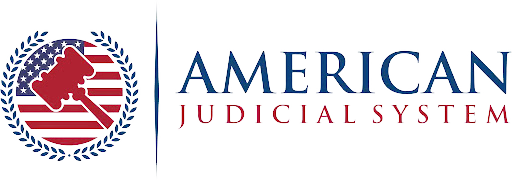When you’re involved in a car accident, the moments that follow can be disorienting and stressful. Beyond the immediate concern for safety and well-being, the thought of an insurance claim or potential legal action can be daunting. Successfully navigating this process often hinges on the quality and comprehensiveness of the evidence you can provide. According to legal experts, a well-documented case significantly improves the chances of a fair settlement, providing a factual account of the incident and its repercussions. This information is vital not only for your records but also for convincing insurers or a court of the validity of your claim.
This guide aims to demystify the evidence collection process, outlining the crucial types of proof needed to substantiate your car accident claim. From official reports to personal documentation, each piece paints a complete picture of what happened and how it has affected you. Understanding what evidence is important and how to gather it can empower you to build a solid case, ensuring you are adequately compensated for damages and injuries.
The NHTSA estimated that 40,990 people died in motor vehicle traffic crashes in the US in 2023. While this reflects a 3.6% decrease from the 42,514 fatalities reported in 2022, the number remains significantly higher than pre-pandemic levels. It underscores the unfortunate frequency of such incidents and the need for preparedness.
The Linchpins of Your Claim: Police Reports, Photos, and Witness Accounts
Immediately after a car accident, certain pieces of evidence are fundamental to establishing the facts of the incident. A police report is often one of the first official documents created and carries significant weight. Officers are trained to document accident scenes, note conditions, and sometimes make preliminary fault determinations. Police reports are considered critical evidence as they document the incident objectively, often including witness accounts and officer observations of the accident scene. This report becomes a cornerstone of your claim, providing an impartial account that insurance adjusters and legal professionals rely on heavily.
Photographs and videos taken at the scene offer undeniable visual proof of the accident’s circumstances and damage. It’s crucial to capture images from various angles, showing the positions of the vehicles, license plates, property damage to all vehicles involved, any skid marks on the road, traffic signals, and even weather conditions. Photographs and videos should document vehicle damage, skid marks, injuries, and road conditions to build a comprehensive record of the accident.
Moreover, visual evidence can extend beyond your photos; as discussed in an article on the role of surveillance footage, CCTV systems in commercial buildings, streets, or even doorbell camera recordings can provide valuable, unbiased evidence for personal injury cases. Such footage can be pivotal in demonstrating how the accident occurred, especially when liability is contested.
Witness statements can dramatically strengthen your case by providing third-party perspectives on the accident. These can come from passengers, other drivers not involved in the collision, or pedestrians who saw what happened. Witness statements from passengers, bystanders, or other drivers can corroborate your account and provide objective perspectives of the incident. It’s important to get their names and contact information at the scene.
Sometimes, authorities actively seek out witnesses and dash-cam videos to assist their investigation. Even if an eyewitness isn’t available for every detail, corroborating testimony can be valuable. Eyewitnesses who prove rash and negligent driving will not be available in all cases, and other forms of evidence can suffice. Still, when available, they are certainly beneficial.
Substantiating Your Injuries: The Role of Medical Documentation
When a car accident results in physical harm, comprehensive medical documentation is paramount to proving your injury claim. This includes medical records related to the injuries sustained, such as initial emergency room reports, doctor’s visit summaries, physical therapy notes, and diagnostic test results like X-rays or MRIs. Medical records and bills must directly correlate with injuries sustained in the accident to substantiate compensation claims. It’s vital to seek medical attention promptly after an accident, even if injuries seem minor, as some conditions, like whiplash, may have delayed symptoms. Putting on a brave face could cost you, especially for injuries with no immediate medical evidence, as this can hinder proving the injury’s impact on daily life or work.
Beyond records detailing the diagnosis and treatment, medical bills are crucial for demonstrating the financial cost of your injuries. Keep meticulous records of all expenses, including hospital stays, ambulance fees, medication costs, assistive devices, and future anticipated medical care. These bills provide tangible proof of your monetary losses directly resulting from the accident.
The process of proving even “invisible injuries” like emotional distress has become more rigorous in the US legal system. Courts often require substantial supporting evidence—such as pre-incident medical history, therapy or counseling records, and documentation from treating mental health professionals—to establish a clear link between the incident and the claimed psychological harm. This underscores the level of medical evidence often necessary to substantiate such claims fully.
Documenting the Ripple Effect: Lost Wages and Other Financial Impacts
The consequences of a car accident often extend beyond physical injuries and vehicle damage, frequently impacting your financial stability. If your injuries keep you from working, documenting lost wages becomes critical to your claim. This typically requires a letter from your employer verifying your pay rate, your usual hours, and the amount of time you could not work due to the accident. Pay stubs before and after the accident can also be supporting evidence.
According to a report on car accident lawsuits in Minneapolis, Minnesota’s no-fault system includes minimum Personal Injury Protection (PIP) coverage that often accounts for $20,000 for lost wages or other costs. It highlights that compensation for lost income is a standard part of many claims processes.
Beyond lost income, there can be numerous other financial impacts that should be documented. These might include costs for transportation to medical appointments if you cannot drive, expenses for household help if your injuries keep you from performing daily tasks, or modifications needed for your home or vehicle. Keep receipts and detailed records for all such out-of-pocket expenses.
Any expense you incurred because of the accident, which you would not have otherwise faced, could be part of your claim. For example, suppose an accident results in long-term disability. In that case, the costs associated with ongoing care and diminished earning capacity can be considerable and must be carefully calculated and proven. The complexity of such calculations often necessitates professional advice to ensure all losses are considered.
Navigating the Claim: Understanding What Insurance Adjusters Look For
When you make a car accident claim, the company will send an insurance adjuster to handle your case. They investigate the claim and determine the insurance company’s liability and the amount it might pay. Adjusters scrutinize your evidence, looking for consistency, credibility, and clear links between the accident and the damages or injuries claimed. They will review the police report for official details, examine photos for evidence of fault and severity, and consider witness statements for corroborating accounts. Medical records are closely inspected to confirm that injuries are consistent with the accident and that treatments are reasonable and necessary. Simply put, adjusters seek a well-supported narrative that justifies the claim amount. The more thorough and organized your evidence, the smoother the evaluation process is likely to be.
Many people ask, can you trust your insurance adjuster? It’s an important question—because while adjusters may present themselves as neutral parties, their primary objective is to protect the insurance company’s bottom line. Insurance claims adjusters work for the insurer and are often incentivized to pay as little as possible. They are experienced negotiators and may use various tactics to minimize your claim.
For instance, they might imply that you don’t need legal representation or pressure you to accept a settlement quickly. Presenting clear, compelling, and well-organized evidence is your best strategy to counter these tactics and support your claim effectively. An experienced lawyer can be invaluable in managing communications with adjusters and ensuring your rights are protected.
Essential Evidence Checklist: Your Guide to a Stronger Claim
Here’s a checklist of essential items to help you stay organized and gather all the necessary information. These will significantly strengthen your position when filing a claim or consulting an attorney.
| Category | Key Items |
| At the Accident Scene | Names, addresses, phone numbers, insurance info; witness contacts; police officer and report details; Photographs/videos of vehicle damage, skid marks, road conditions; written notes with date, time, location. |
| Medical Documentation | Medical reports from doctors/hospitals, bills & receipts; injury journal; records of pre-existing conditions. |
| Financial and Other Losses | Proof of lost wages; vehicle repair/replacement receipts; documentation of out-of-pocket expenses; Vehicle registration and insurance policy documents. |
Preserving Your Evidence Effectively
Gathering evidence is the first step; preserving it effectively is equally important. Keep all original documents safe and make copies for your records and submission to insurance companies or legal counsel. To prevent loss, digital evidence, such as photographs and videos, should be backed up in multiple locations, like a cloud storage service and an external hard drive. When it comes to physical evidence, such as damaged personal property from the vehicle, do not dispose of it until your claim is fully resolved, as it might need to be inspected.
The Karen Read trial highlighted how digital forensics experts found missed data from an initial car investigation that could pinpoint movements, emphasizing that even seemingly minor data can be crucial and needs careful preservation and analysis. Maintaining a clear, organized file of all evidence will make it easier to access when required and present a more professional and credible case.
Furthermore, maintain a detailed log of all communications related to the accident, including dates, times, names of individuals you spoke with, and a summary of the conversation. This includes interactions with insurance adjusters, witnesses, and medical providers. If you send any correspondence, use registered mail for proof of delivery. This meticulous record-keeping can protect you from misunderstandings and provide a timeline of how your claim has been handled.
For instance, if an insurance adjuster makes a verbal commitment, having it noted in your log, or better yet, requesting it in writing, can be very useful. The goal is to create an undeniable and easily accessible record of every aspect of your claim, from the incident to the final resolution. This diligence in preservation can prevent critical information from being lost or overlooked, which is vital for building a robust claim file.
Thoroughness is Your Ally
Proving your case after a car accident requires diligence, attention to detail, and an understanding of what constitutes compelling evidence. From the immediate aftermath at the scene to the ongoing collection of medical and financial records, each piece of information contributes to building a comprehensive and persuasive claim file. The strength of your evidence directly influences your ability to negotiate a reasonable settlement with insurance companies or, if necessary, to succeed in legal proceedings.
Police reports, photographs, witness statements, medical documentation, and proof of financial losses are the building blocks of your narrative, substantiating your experience and the impact the accident has had on your life. Being thorough in evidence collection and preservation is your most powerful tool in navigating the path to a just resolution.










